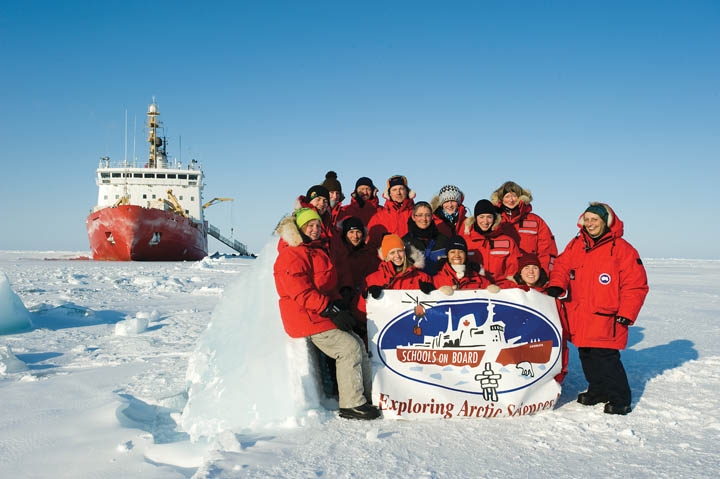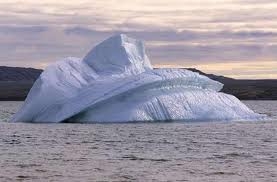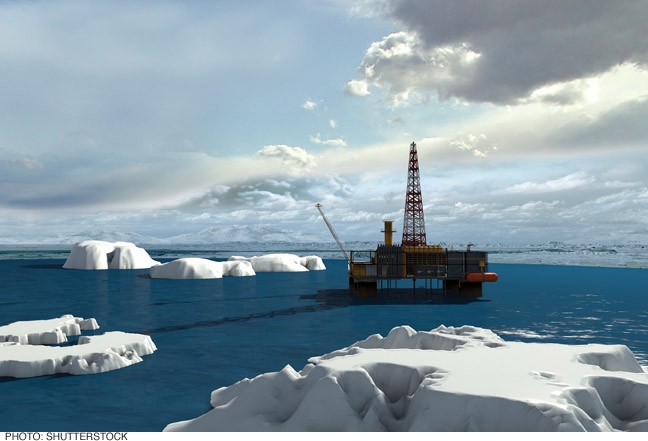
ArcticNet: Coming together in the study of a changing Arctic
The Canadian Arctic is a daunting place: bathed in darkness for half the year, remote, difficult to get to by air or sea, with mind (and body) numbing temperatures and literally thousands of kilometres separating it from the 80 per cent of Canadians who live a hop, skip and a jump from the U.S. border. While the region, which is critical to our country, has not traditionally been at the forefront of study, there is one organization that has been working towards changing that.
The ArcticNet Network of Centres of Excellence of Canada has changed the way Arctic research is carried out by bringing together scientists, students and partners from all over Canada and the world and connecting them in ways never before possible.
Dr. Martin Fortier, executive director of ArcticNet, explains why Canadians should be invested in the future of the Arctic. “Although the Canadian Arctic covers over 40 per cent of our country and two thirds of our coastline, it’s an area that’s still poorly studied and understood. What we know, and the public knows more and more, is that the Arctic is at the forefront of climate change and is a great indicator or a bellwether of things to come elsewhere on the planet.” Dr. Fortier says the Arctic should not be seen as independent of the rest of the world, as the Earth’s climate systems are interlinked and “any changes to the icy and snowy top of our planet will have repercussions on a planetary scale, especially in Canada.”
The Canadian Arctic is also home to approximately 100,000 Canadians who live in a few larger communities such as Yellowknife, Iqaluit, Inuvik and Kuujjuaq and in over 50 smaller Inuit communities or hamlets along the Arctic coast. There is a great need for concerted scientific research to inform and help all Canadians deal with the challenges and opportunities brought by climate change and modernization in the area.
Supported through the Network of Centres of Excellence of Canada program, one of ArcticNet’s major goals is to build synergy among existing research centres in the natural, human health and social Arctic sciences to form one large pan-Canadian network to address larger issues such as climate change or modernization. Dr. Fortier explains that “before ArcticNet, a professor could easily spend an entire life’s work studying one specific aspect of the Arctic, publish important scientific papers, have a very successful academic career, but rarely interact with peers from other research sectors or with the receptor community. They had very limited opportunities or conduits to share their knowledge with policy and decision makers. One thing that we have to do is to bring these experts together to answer broader questions and then link the holders and users knowledge.”
Research projects funded by ArcticNet are supported on three or four year cycles while the network itself is funded for seven years. It is hoped that ArcticNet funding will be renewed for an additional seven years. Dr. Fortier says this 14 year window of “potential stability” is one of the major assets that helped ArcticNet attract the now 140 Canadian scientists and 450 graduate students and technical staff from 30 Canadian universities and eight federal departments in all 10 provinces that fall under the organization’s umbrella. The growing national and international recognition and longterm funding were also major tools to attract the dozens of international research organizations and industrial partners that contribute to the ArcticNet program.
Long-term research windows are one thing, but large scientific undertakings, especially in the Arctic, are extremely expensive and require a lot of specialized, expensive equipment and infrastructure. ArcticNet provides researchers with access to world class research infrastructures, such as the Canadian Research Icebreaker CCGS Amundsen to access and study the coastal Canadian Arctic.
“It’s similar to kids in a sandbox. As long as they are willing to share, kids with the nicest toys attract a lot of friends. We can say the same for ArcticNet,” Dr. Fortier says. “During the last decade, the Canadian academic community has been extremely successful at competing for research and infrastructure funding at the national level, especially for large multidisciplinary programs.” The Amundsen is one such case and is funded by the Canada Foundation for Innovation. Owned by the Canadian Coast Guard and operated through a cost-sharing agreement with a consortium of academic and government researchers led by Québec City’s Université Laval, the Amundsen has been a key logistics provider not only for ArcticNet scientists, but also for other Canadian and international researchers in natural and human health since 2003. The Amundsen has also helped ArcticNet forge major partnerships with industry that now co-fund some of its research conducted on-board the vessel.
Attracting international research and expertise is paramount to the study of the Arctic, and so ArcticNet has granted “unprecedented access to the Canadian Arctic for its investigators and their international collaborators.” With a recent $85 million investment from the Canadian government to refurbish or replace decaying Arctic research infrastructures, Dr. Fortier predicts even more international interest in the Arctic.
While these are all positives, the more the network grows, the more difficult it can be to sustain, Dr. Fortier admits. “The long-term funding, the excellence of the research, the people involved, and the state-ofthe- art infrastructure that we have, all of these help in building this large research network, but it also adds to the challenge of keeping all this running. It’s all very costly, and securing long-term funding to maintain these infrastructures and networks is a major challenge for the academic community. But, we have been pretty successful so far and are always looking into new, novel avenues to insure the legacy of our past efforts and the need for stable, continued funding.”
The research conducted via the network is important to Canada as it informs and influences Canada’s northern policy and the Government’s Northern Strategy, from the Integrated Regional Impact Assessments which deal with how climate change and modernization affect communities on a regional and local level, to informing policy and bringing these issues to Ottawa and beyond.
ArcticNet’s ability to bring natural, health and socio-economic science research under one umbrella offers Arctic scientists what Dr. Fortier calls a canvas to put their results together, to go beyond the scientific publications. The next generation of students and researchers is implementing the new movement in Arctic research – encouraging collaboration among universities, government and industry on a large, international scale with an eye on the big picture.
The accomplishments of the network are major, says Dr. Fortier, but even as we come out of the huge international research effort supported through the Fourth International Polar Year, the need for more investment in research and monitoring to help prepare for the challenges and opportunities facing us in the Arctic is great. Dr. Fortier recognizes the road and challenges ahead but emphasizes the network is in it for the long haul.
“I think we’ve been extremely successful over the first seven year cycle of ArcticNet, but we still have a lot of work to do.” Dr. Fortier says.
Understanding the present transformation of the Arctic and anticipating its consequences is one of the great challenges faced by Canadians, governments and the international scientific community. With the expanding public awareness of the need for this research today more than ever, ArcticNet’s efforts will become steadily more important in the daily lives of citizens – of both Canada and the world.










